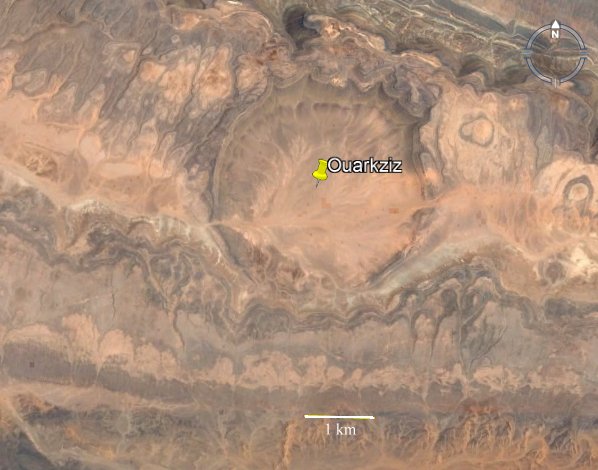- Фельдман В.И. (1987). Каталог астроблем и метеоритных кратеров Земли // Метеоритика, Issue 46, с. 154-171
- Алексеев А.С. и др. (1991). Оценки частоты падения небесных тел на Землю, исследование возможности заблаговременного их обнаружения и изменения траекторий. - Отчёт по НИР, АН СССР ВЦ, Новосибирск , 128 с.
- Grieve R.A.F. (1987). Terrestrial impact structures // Ann.Rev.Earth Planet.Sci., Vol.15, p. 245-270
- (1988). Astronauts guide to terrestrial impact craters // Space Shuttle Earth Observation Project, Lunar and Planetary Institute (March 1988).
- Hodge P.W. (1994). Meteorite craters and impact structures of the Earth // Cambridge University Press , 122 рр.
- Osinski G.R. (2006). The geological record of meteorite impacts // 40th ESLAB First International Conference on Impact Cratering in the Solar System, 8-12 May 2006., Noordwijk,The Netherlands
- Reimold W.U., Koeberl C. (2014). Impact structures in Africa: A review // Journal of African Earth Sciences. - 93: 57-175.
- Chabou M.Ch. (2016). AN UPDATED INVENTORY OF METEORITE IMPACT STRUCTURES IN THE ARAB WORLD // Conference: First ArabGU International Conference (AIC-1) - February 17-18, 2016.At: FSTGAT-USTHB, Algiers, ALGERIA.
The Quarkziz crater is located in western Algeria, close to the Moroccan border. The crater is 3.5km in diameter, and has a central uplift structure. The external rim has a height of 100m from top to bottom, and is made up of strongly dipping sedimentary rocks. Concentric and radial faults can be seen here, and appear to have caused a small amount of displacement. Some fracturing of the rocks is also noticeable, and many of these fractures are filled with breccias. Inside the external ring is an annular trough that has been filled with alluvium, as well as fallen material from the rim. The central uplift structure is made up of several beds plunging towards the center that have been asymmetrically folded. The rocks here are strongly fractured, and monogenic breccias are present. These breccias are made up of various rock fragments cemented by calcite or rock debris.
The target rocks are sedimentary rocks, which can be divided into the Viseen and Namurien layers. The Visean layers are limestones and carbonates, alternating with green marls, and some gypsum. The Namurian layers are sandstones and clays. These units have an approximate age of Carboniferous. Local sandstone formations that were deposited after the impact event have been dated as Cretaceous. This loosely constrains the time of the impact event to between the Carboniferous and Cretaceous, although more recent estimates place the event in the late Cretaceous.
Quarkziz has limited evidence of an impact origin, in that no impact glass or meteorite fragments have been found. However, petrographic studies have identified planar deformation features in quartzites from the central uplift structure, and from the outer edges of the crater. While the presence of breccias is an important characteristic of impact craters, it is not as diagnostic as the planar deformation features found here.
(Principal researchers: J.Fabre, N. Kazi-Tani, M. Megartsi)

Спутниковая фотография кратера из Google Earth.
На главную

